This article is all about guiding you through the essential steps needed to successfully implement randomized trials in Applied Behavior Analysis (ABA) therapy.
Before diving into these trials, it’s important for learners to set clear objectives and protocols. This not only helps in structuring the research but also ensures that it’s efficient, leading to reliable and impactful results for individuals with developmental disorders—all backed by evidence-based practices.
Let’s explore this together!
Understanding the intricacies of randomized trials is crucial in the world of Applied Behavior Analysis (ABA) therapy. Here, tailored interventions can make a real difference for children with developmental disorders. 🌟 Let’s explore the nine essential steps for effectively rotating trials together! By doing so, you’ll see how to implement strategies that ensure interventions are not just personalized, but also supported by solid evidence.
But here’s the challenge: how can clinicians navigate the complexities of randomization and bias to achieve the most reliable results? This article will delve into the core principles and practical steps necessary for optimizing randomized trials in ABA therapy. Together, we can pave the way for improved care and outcomes!
In order to randomly rotate trials, what must a learner have done first in implementing randomized trials in ABA therapy to rigorously assess how effective different interventions can be? In order to randomly rotate trials, what must a learner have done first when clinicians randomly assign youngsters to various intervention groups to gather solid data on which strategies yield the best results? This approach not only personalizes care but also ensures that interventions are backed by strong evidence. Did you know that studies show ABA therapy has an impressive over 89% success rate in enhancing various developmental aspects for youngsters with developmental disorders, such as communication and social skills?
Moreover, effective therapeutic methods are discovered through randomized trials, leading to customized strategies that cater to each individual's unique needs; in order to randomly rotate trials, what must a learner have done first? Clinicians have noticed that data-driven interventions significantly improve care outcomes, reinforcing the importance of evidence-based practices in autism support. And here’s something exciting: by integrating personalized therapy with advanced AI, Rori Care boosts efficiency by automating progress report creation, freeing up 50% more time for treatment!
Continuous assessment and adjustment of personalized plans ensure responsiveness to each individual's evolving needs. Ultimately, the impact of randomized studies goes beyond immediate behavioral improvements; it promotes long-term development and autonomy in individuals with autism. Let’s explore this journey together and see how these methods can make a difference!
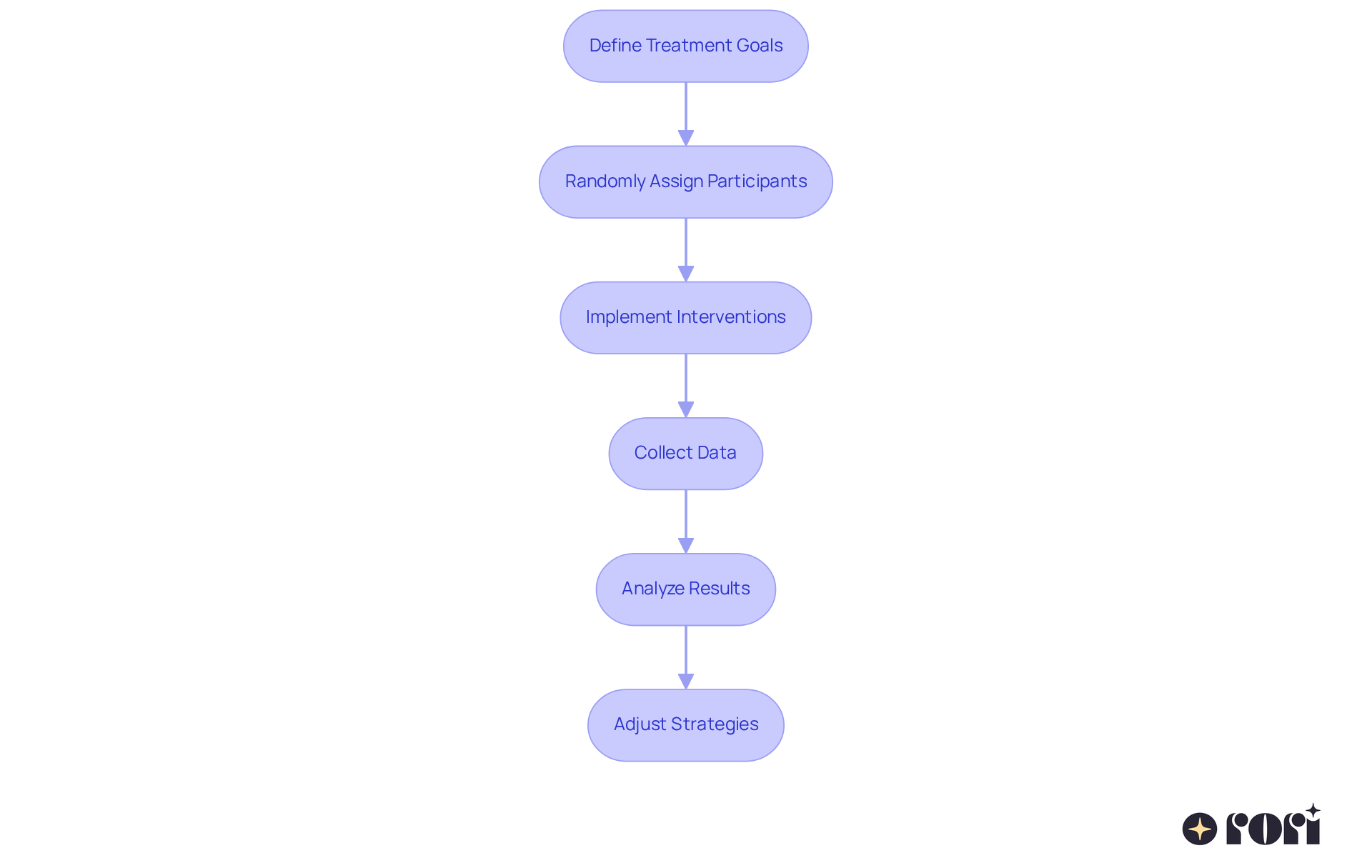
Randomization is a key player in clinical trials, giving each participant a fair shot at being placed in any intervention group. This important step helps reduce selection bias, making the results more applicable to real-world situations. In the world of ABA therapy, which tailors to each person's unique needs by tapping into the science of learning and behavior, clinicians must understand in order to randomly rotate trials, what must a learner have done first. It helps them create balanced groups that truly reflect the diverse populations they support.
This balance is super important when evaluating how effective interventions are, leading to better outcomes for youth with developmental disorders. However, recent studies show that selection bias remains a significant challenge in clinical research. Research highlights that poor randomization can skew results and make conclusions less reliable. By employing effective randomization techniques—like permuted block design (PBD) or stratified randomization—ABA therapy research can achieve more valid and trustworthy results. This progress is vital for enhancing intervention strategies, especially in early intensive behavioral intervention (EIBI), which plays a crucial role in boosting learning, verbal, and social skills for children with autism. Let’s explore this together!
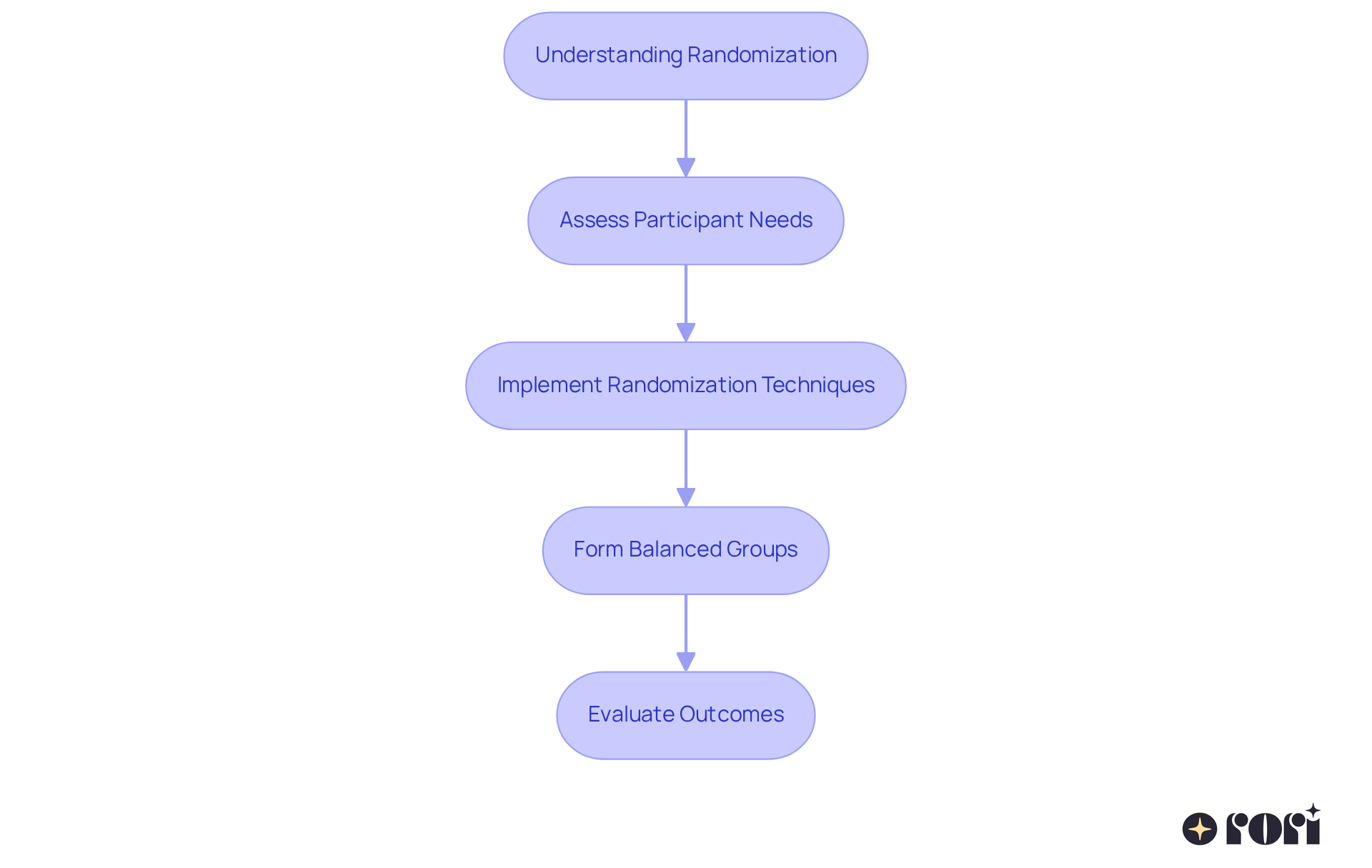
To effectively reduce bias in randomized studies, it’s important for clinicians to prioritize blinding both participants and researchers to intervention assignments. This practice is essential because it helps prevent performance and detection biases that can skew results. Using random number generators for allocation further boosts the integrity of the study, ensuring that treatment assignments are random and unbiased. Plus, sticking to inclusion criteria is crucial for maintaining the study's focus and validity.
Regular evaluations of experimental procedures can help spot and address potential biases early in the research, which strengthens the reliability of the results. Experts agree that blinding isn’t just a procedural formality; it’s a key part of study design that greatly impacts the reliability of outcomes. Recent findings show that studies using strong blinding methods yield more reliable results, especially in the area of ABA therapy, where precise evaluation is so important. By implementing these strategies, researchers can enhance the quality of their findings and contribute to more effective care for individuals on the autism spectrum. Let’s explore this together!
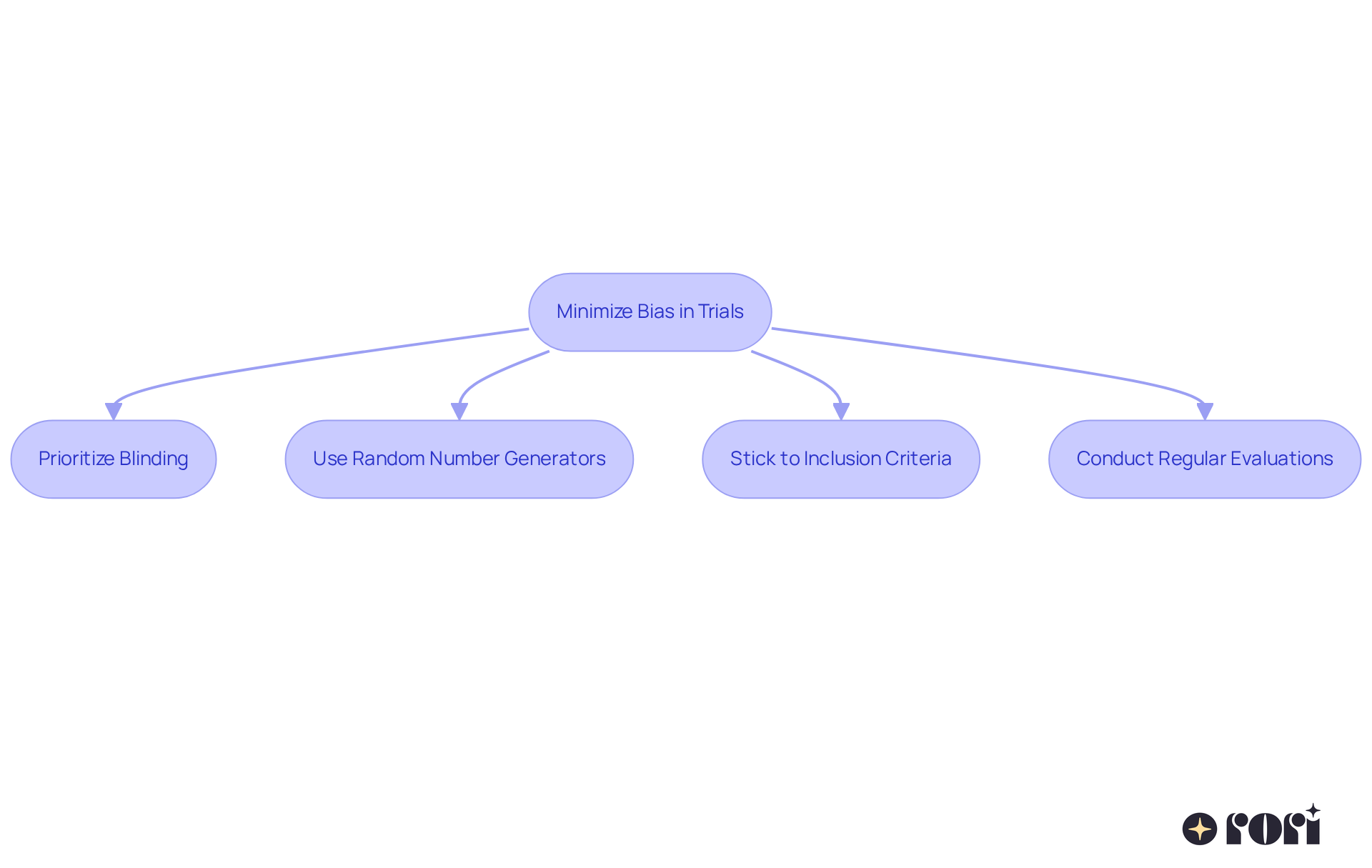
Randomized controlled studies (RCTs) play an essential role in autism research, showcasing various designs like parallel-group studies, crossover studies, and cluster-randomized studies. In parallel-group studies, participants are placed into either an intervention or control group, which allows for direct comparisons of results. On the flip side, crossover studies enable participants to experience both treatments at different intervals, enhancing our understanding of treatment effects within the same individuals. This design is particularly beneficial in ABA therapy, as it facilitates direct comparisons of interventions while accounting for individual differences.
Cluster-randomized studies take a different approach by assigning entire groups, such as classrooms, to different interventions. This can be especially useful in educational settings! Each study type comes with its own set of advantages and challenges. For instance, while crossover studies often yield more reliable data by reducing variability, they can also introduce carryover effects if not properly managed. Meanwhile, parallel-group studies are easier to analyze but may require larger sample sizes to achieve statistical significance.
Current findings suggest that crossover studies in ABA therapy can provide more personalized insights into treatment effectiveness, as they allow for repeated measures within the same subjects. However, it’s important for researchers to thoughtfully consider their design choices based on specific research questions and the nature of the interventions being examined. Understanding these study structures is crucial for healthcare professionals who aim to implement effective, evidence-based methods in treating developmental disorders. Let’s explore this together!
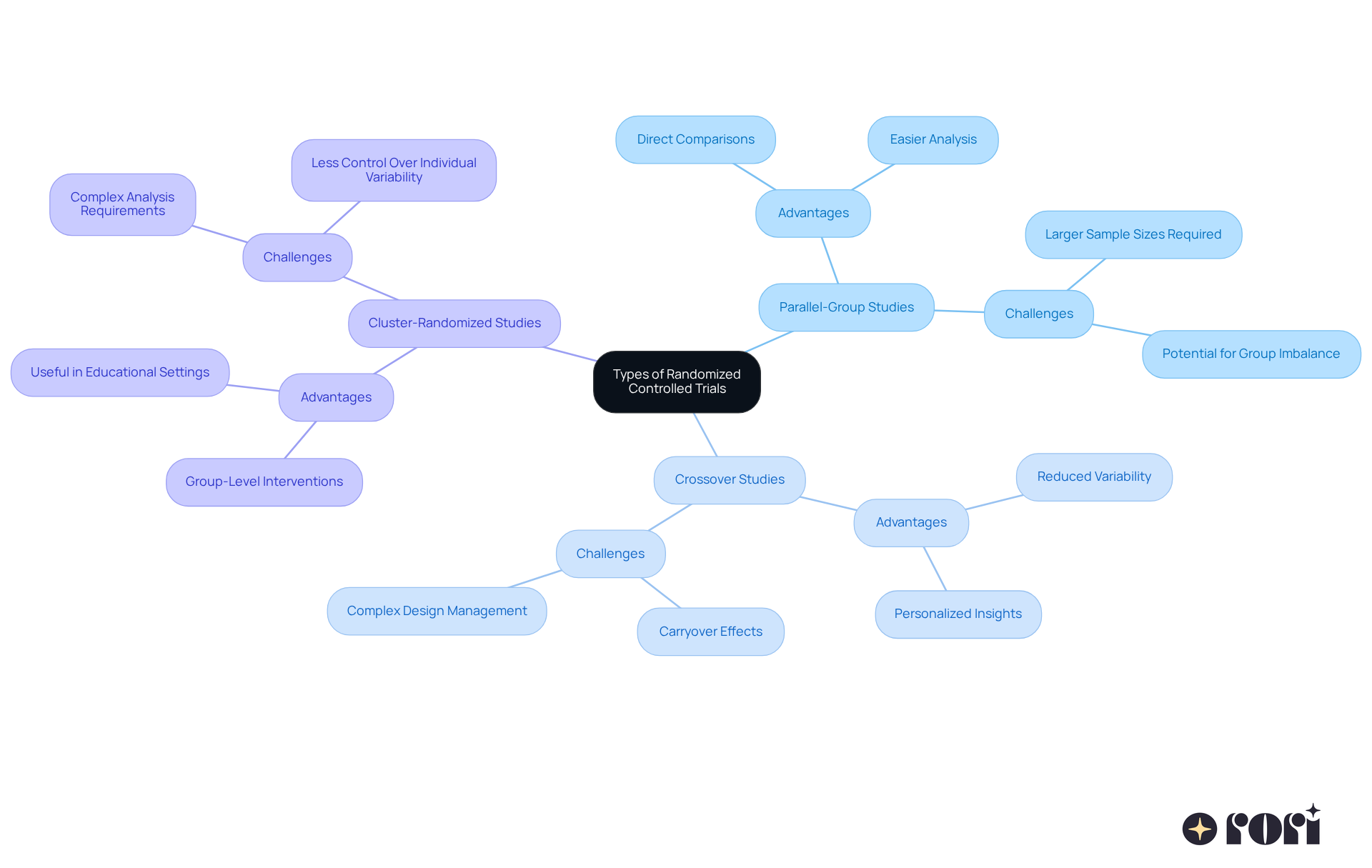
In the realm of randomized studies, it’s super important to follow ethical guidelines to protect participants. This all starts with obtaining informed consent. This process ensures that participants are fully aware of their rights, like the ability to withdraw from the study at any time. The importance of informed consent is huge, especially in clinical studies for autism treatment, where understanding the potential risks and benefits is vital for everyone involved.
Current data shows that consent rates in randomized studies can really vary. Some research even reports averages as high as 82.6%! However, around 26% of tests fall below the critical threshold of 70%. This highlights the need for better engagement strategies. For example, in ABA therapy research, informed consent processes need to be tailored to address the unique concerns of families, making sure they understand what participation really means.
Experts agree that ethical oversight by institutional review boards (IRBs) is key to maintaining these standards. Researchers should think about the potential risks and benefits of participation, working to minimize harm while maximizing positive outcomes. By creating a clear and nurturing atmosphere, researchers can improve the informed consent process. This ultimately leads to more efficient and ethically responsible clinical studies.
Let’s explore this together! By staying informed and engaged, we can help ensure that everyone involved feels supported and understood.
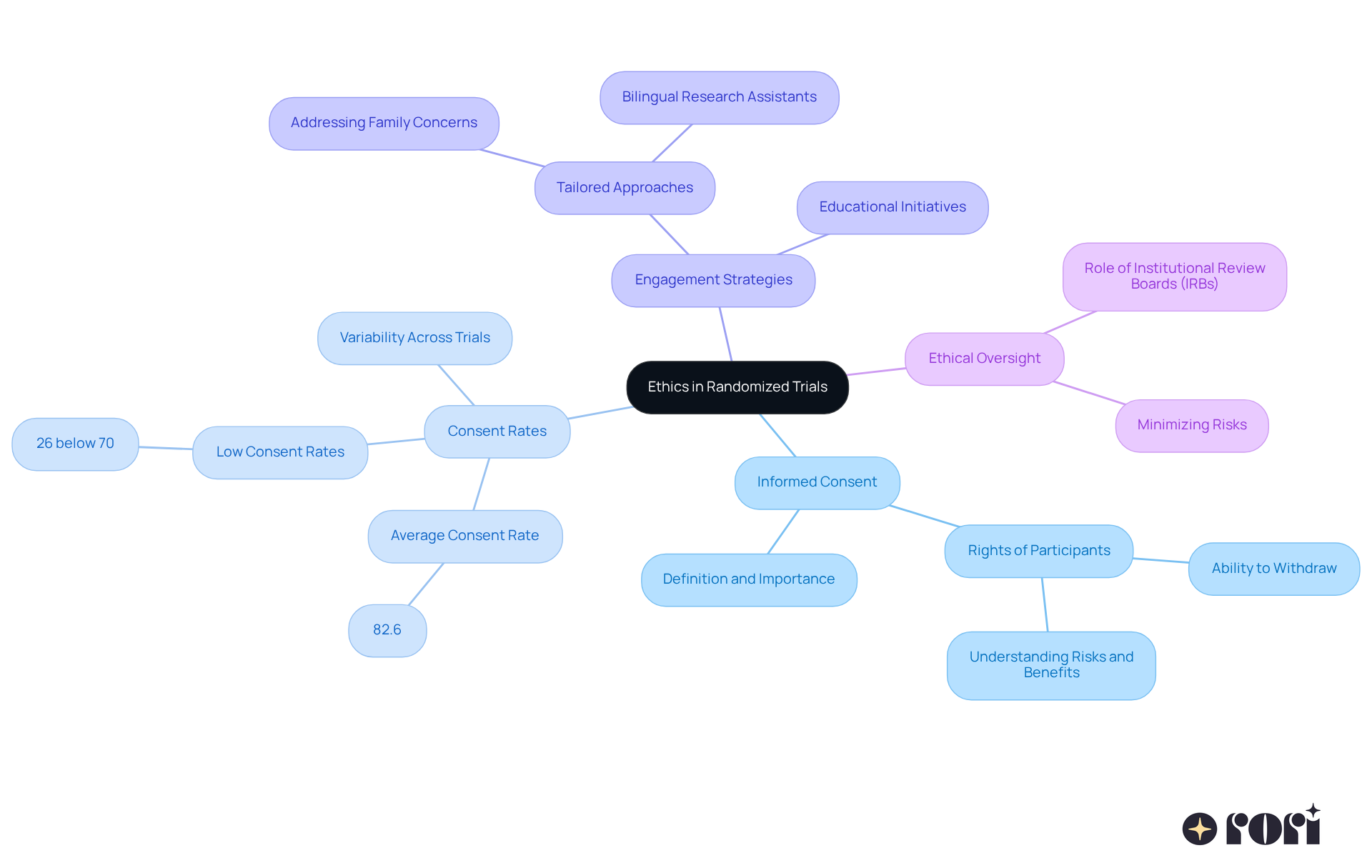
Following established reporting standards, like the CONSORT guidelines, is super important for making sure we’re all on the same page in randomized studies. These guidelines lay out a clear framework for sharing study design, methods, results, and conclusions, which helps everyone—peers and stakeholders alike—evaluate the research effectively. Did you know that only 39% of clinical studies registered in ClinicalTrials.gov reported results by early October 2021? Plus, about 4 in every 10 randomized controlled studies included in registries didn’t make it to journal articles even two years after completion. This really highlights the need for better transparency in clinical research!
The CONSORT guidelines not only boost the credibility of research but also encourage the replication of studies. This is a vital part of enhancing our understanding of care for individuals with developmental disorders. As Douglas G. Altman wisely said, "To interpret an experiment accurately, readers need complete and transparent information on its methods and findings." This commitment to openness is particularly crucial when it comes to research about developmental disorders, where accurate reporting can significantly impact therapeutic outcomes and the development of effective strategies.
Additionally, the CONSORT 2025 statement introduces new elements regarding patient involvement and the evaluation of harms. This shows how reporting standards are evolving to better meet our needs. Let’s explore this together! It’s all about ensuring that we have the best information at hand to support our loved ones.
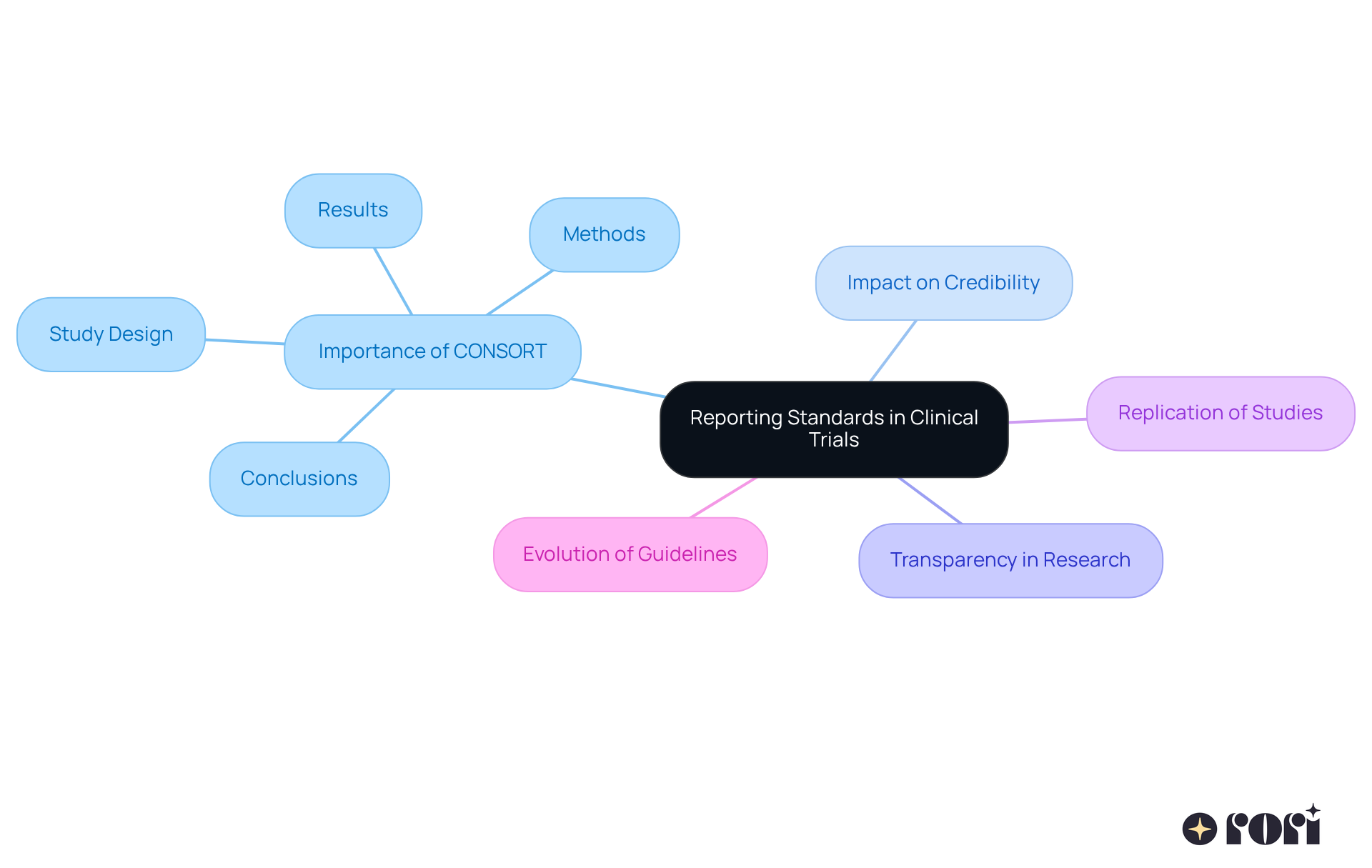
Adaptive study designs are a game-changer for researchers, allowing them to tweak study parameters based on interim results. This flexibility can really ramp up the efficiency and relevance of autism care investigations. For instance, if early data shows that a certain intervention is particularly effective, researchers can quickly reassign participants to that group. This means we can identify effective therapies faster and reduce the time participants spend on less effective options—ultimately benefiting everyone involved! 🌟
Recent findings show that adaptive designs are becoming more common in ABA therapy studies, which reflects a growing recognition of their potential to enhance outcomes. Researchers are excited about the flexibility that adaptive methodologies offer, as they enable more responsive and patient-centered approaches. This leads to better resource utilization and improved trial efficiency. By utilizing adaptive designs, the autism treatment field can deliver quicker and more effective interventions, ensuring that young individuals receive the best possible care.
Key Benefits of Program Development in Adaptive Designs:
And there’s more! The incorporation of AI-driven progress report automation can significantly cut down on the time spent on administrative tasks, freeing up 50% more time for direct care. This empowers caregivers by equipping them with ABA principles and strategies, encouraging their active involvement in their child's behavioral goals and data collection.
However, it’s important to recognize that adaptive designs come with their own challenges, like complexities in planning and potential biases. These factors need careful consideration to maintain the integrity of results. Let’s explore this together and ensure we’re making the best choices for our children’s care!
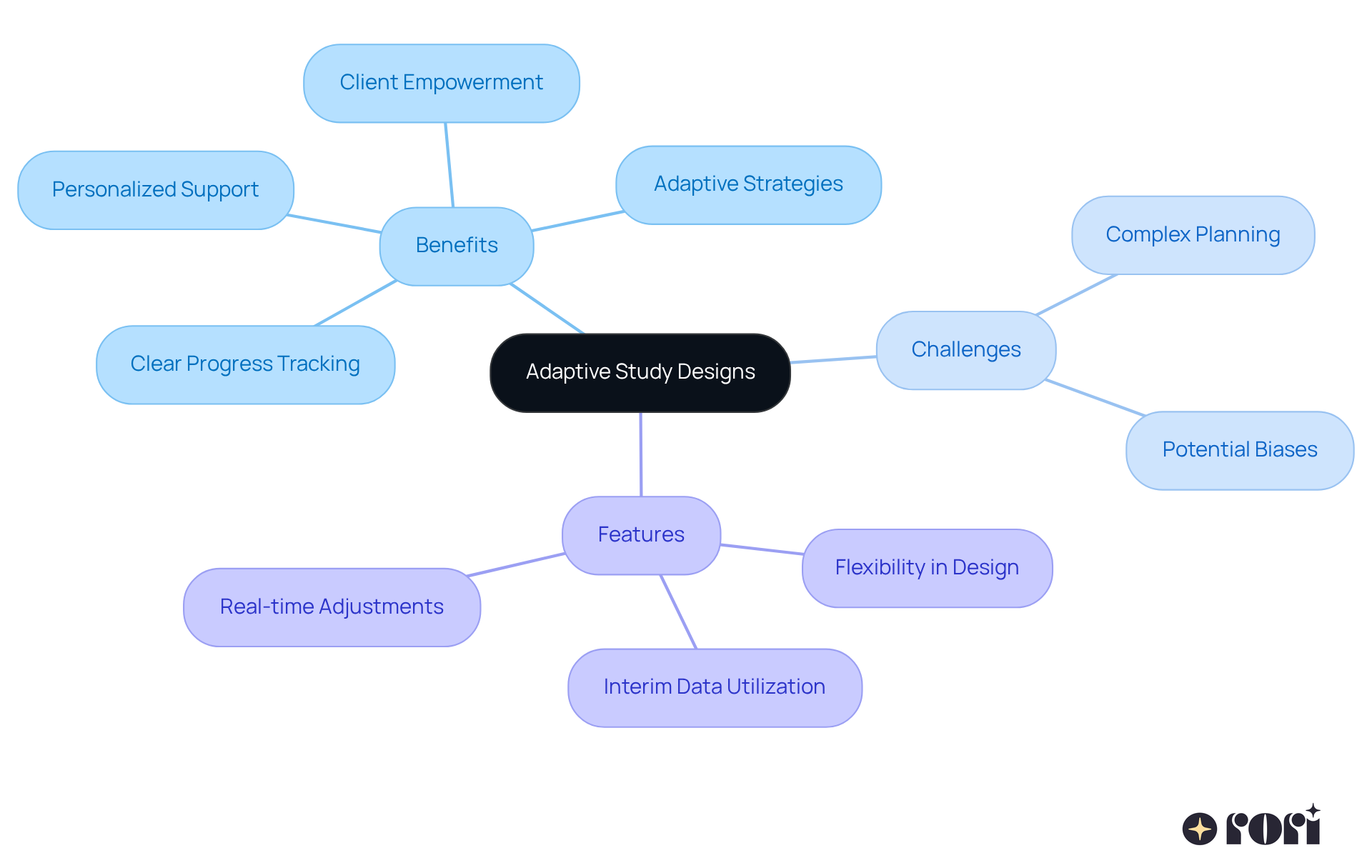
Using the right statistical techniques is super important when we look at data from randomized studies. Techniques like:
help researchers figure out how significant treatment effects are and manage any confounding variables. Plus, using software tools for statistical analysis can really make things easier and boost the accuracy of the results. Understanding these techniques allows healthcare professionals to make informed choices based on the insights gathered from studies. Let’s explore this together!
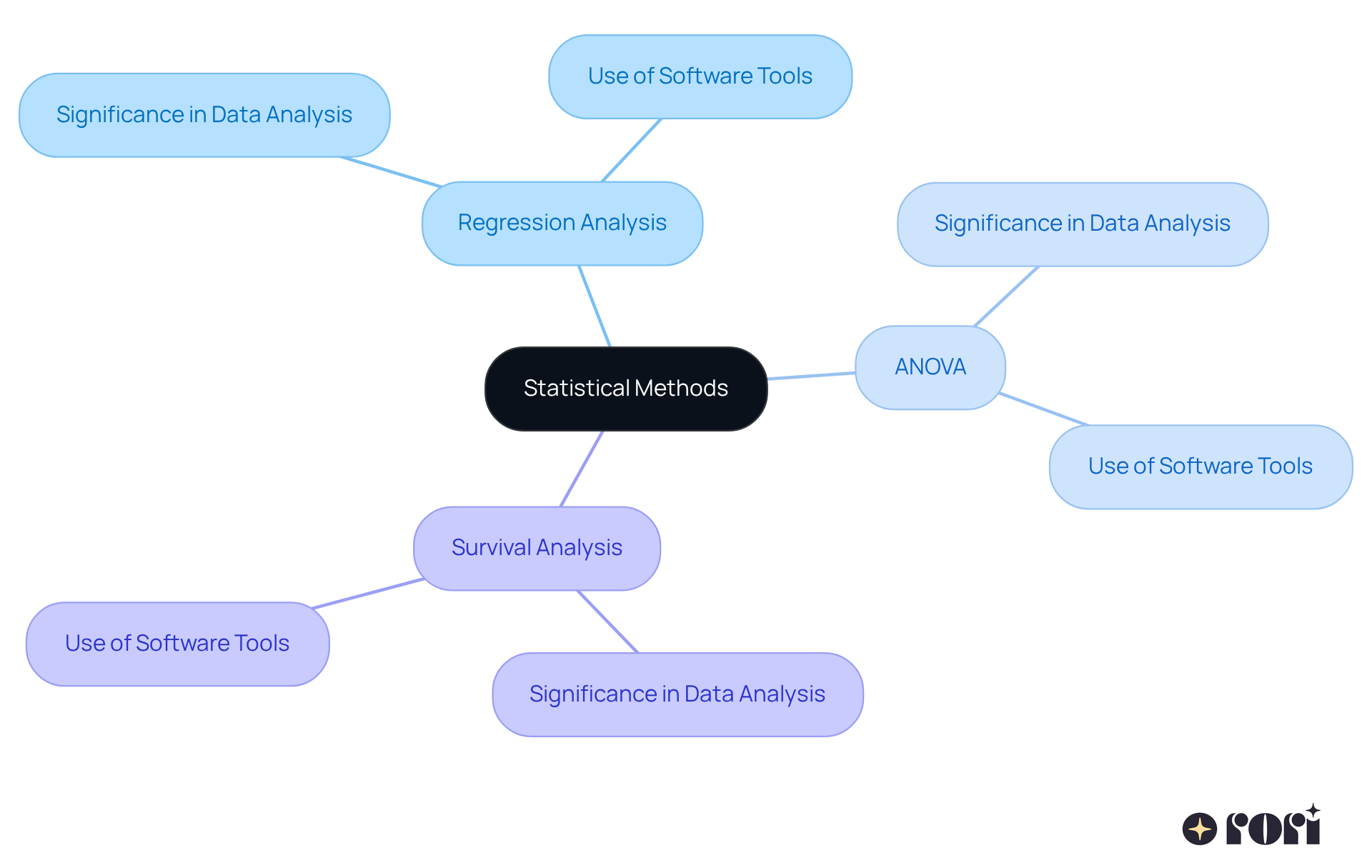
Selecting participants for randomized trials is an important task, and it starts with setting clear inclusion and exclusion criteria. These criteria help ensure that the study population truly reflects the diverse group we want to understand. When considering eligibility, factors like age, diagnosis, and symptom severity play a crucial role.
Interestingly, research shows that about 57% of studies use restrictive exclusion criteria. This often means young individuals with comorbid conditions are left out, which can really limit how applicable the findings are to the broader autism community. Without a diverse group of participants, we might miss out on understanding how effective applied behavior analysis (ABA) therapy can be for different kids.
Experts remind us that knowing the traits of youth who benefit from these interventions is essential. Without this understanding, making informed treatment recommendations can be quite challenging. By choosing participants thoughtfully, researchers can enhance the generalizability of their study results. This way, the findings become relevant and beneficial for a wider range of children with autism. Let’s explore this together and see how we can make a difference!

When it comes to conducting randomized studies in Applied Behavior Analysis (ABA) therapy, it’s essential for clinicians to follow a structured approach. This starts with setting clear objectives and crafting a detailed protocol, which serves as a roadmap for the entire team. By ensuring everyone is on the same page, we can work together more effectively! Training all team members is also key; it helps everyone understand the study's requirements and stick to the protocols, especially when treatment plans need tweaking based on progress and caregiver involvement.
Keeping a close eye on study progress is crucial. Did you know that adherence rates in clinical research can significantly impact outcomes? For instance, median protocol adherence rates are around 89.8% for noninferiority studies and 91.5% for superiority studies. These figures highlight how important it is to maintain high standards throughout the testing process, particularly in ABA therapy, where following protocols closely is vital for valid results and participant safety.
Open communication among team members and stakeholders is so important for tackling challenges as they come up. This collaborative approach not only helps resolve issues but also ensures we stay on track to meet our goals. For example, a decentralized oncology study that used telehealth follow-ups achieved an impressive 95% adherence rate at the six-month mark! This shows how flexible strategies can enhance participant engagement. Plus, offering options like telehealth and home visits can really lighten the load for participants, making it easier for them to stay involved.
In ABA therapy studies, using automated data gathering techniques with secure storage and anonymization can boost efficiency, giving us 50% more time for youth care. It’s also worth noting that ABA therapy is the only scientifically validated treatment for developmental disorders that insurance covers, making it accessible for many families. As Meri Beckwith wisely pointed out, "Failure to adhere to protocols can have severe consequences, ranging from compromised data validity to legal and ethical implications."
Clinicians can truly optimize randomized trials by empowering caregivers with ABA principles and strategies for supporting youth behavioral goals through active involvement and data collection, in order to randomly rotate trials, what must a learner have done first? This ultimately leads to more reliable and impactful results in autism research. And here’s an encouraging statistic: notable progress is observed in 90% of children when recommended hours are fully implemented with active caregiver involvement. Let’s explore this together!

Implementing randomized trials in ABA therapy is a crucial step toward providing effective support for individuals with developmental disorders. By adopting a structured approach to trial rotation, clinicians can gather valuable insights that lead to personalized interventions backed by solid evidence. This emphasis on randomization not only reduces bias but also boosts the reliability of outcomes, ultimately enhancing care for those on the autism spectrum.
Throughout this article, we’ve explored key strategies for effective trial rotation. These include:
Each of these elements plays a vital role in shaping research methodologies that prioritize participant well-being and treatment efficacy.
As the field of ABA therapy continues to grow, the importance of conducting rigorous randomized trials cannot be overstated. It’s essential for researchers and clinicians alike to stay committed to transparency, ethical considerations, and the application of robust statistical methods. By creating an environment that encourages collaboration and innovation, we can work together to ensure the best possible outcomes for individuals with autism. Embracing these practices not only advances the science of ABA therapy but also empowers families and caregivers to take an active role in their loved ones' developmental journeys. Let’s explore this together and make a difference!
What is the significance of randomized trials in ABA therapy?
Randomized trials in ABA therapy are crucial for rigorously assessing the effectiveness of different interventions, ensuring that strategies are personalized and backed by strong evidence.
What must a learner do first to implement randomized trials in ABA therapy?
A learner must first understand the core principles of randomization to effectively rotate trials and gather solid data on intervention strategies.
How does randomization help in clinical trials?
Randomization ensures that each participant has a fair chance of being placed in any intervention group, which reduces selection bias and makes results more applicable to real-world situations.
What are some effective randomization techniques mentioned in the article?
Effective randomization techniques include permuted block design (PBD) and stratified randomization, which help achieve valid and trustworthy results in ABA therapy research.
How can bias be minimized in randomized studies?
Bias can be minimized by prioritizing blinding of both participants and researchers to intervention assignments, using random number generators for allocation, and adhering to strict inclusion criteria.
Why is blinding important in clinical research?
Blinding is important because it helps prevent performance and detection biases, which can skew results, ultimately enhancing the reliability of the study's outcomes.
What impact do randomized studies have on individuals with autism?
Randomized studies promote long-term development and autonomy in individuals with autism, beyond immediate behavioral improvements.
How does Rori Care enhance the efficiency of ABA therapy?
Rori Care enhances efficiency by integrating personalized therapy with advanced AI, automating progress report creation, and freeing up 50% more time for treatment.